23 June 2018
Deformed conglomerate of Frog Lakes, California
Posted by Callan Bentley
I’ve been lucky to spend the past week+ in California with friends, including geoscience outreach wonder duo Ryan and Laura Hollister. We spent an enjoyable 4 days on the east side of the Sierra Nevada, attending field trips through the Mono Basin Bird Chautauqua alternating with excursions to entertain our collective posse of four kids. One day, we took the kids up to Virginia Lakes to go fishing, and Laura and I were able to get in some geologizing. We hiked up to the Frog Lakes, where there is a beautiful deformed conglomerate exposed.
These rocks were very exciting to me.
Here’s a boulder: You can see the elongation of its component clasts:

Some of the clasts are themselves made of smaller clasts, and they too show internal development of the regional foliation:

Deformation here appears to have been accomplished by pressure solution, causing the clasts to warp and wrap around each other:

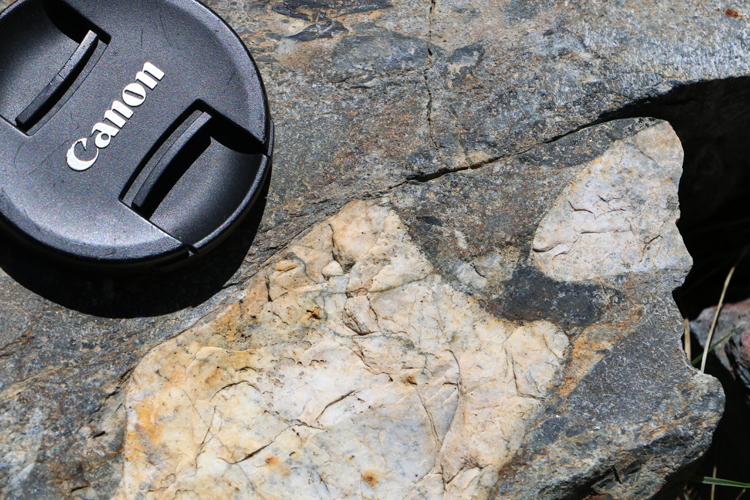
Here’s an example of what Chuck Bailey might call a “double-duckbill”:
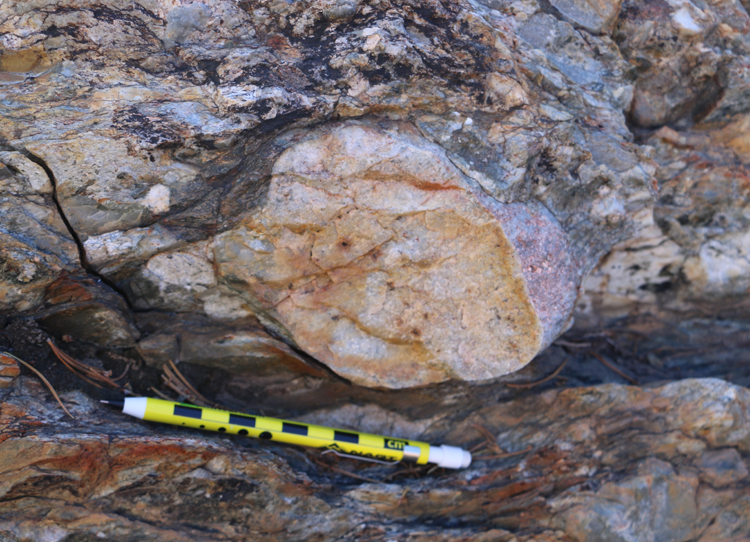
Douglas, et al. (2011) used this unit (which they call a ‘breccia’) as a sedimentary record of the flavor of early arc magmatism affecting coastal paleo-California about 224 million years ago. But I was interested in it from a structural perspective: how the big, charismatic clasts serve as records of the strain accumulated by the wall rocks (or “roof pendants” in this case) during transpressional squeezing prior to (or coincident with) the intrusion of the magmas that would cool to become the Sierra Nevada batholith. This was, after all, the subject of my master’s thesis at the University of Maryland. I mapped very similar rocks south-southwest along strike from Frog Lakes. It was a delight to clamber around and check out these beautiful rocks, simultaneously showing sedimentological and structural features. It made me wish I had mapped this area back in 2003.
Here’s an example of the sort of thing that gets me excited: a boulder showing both graded bedding (fining upward, from the lower left to the upper right) and a pronounced tectonic fabric (running subhorizontal from left to right):

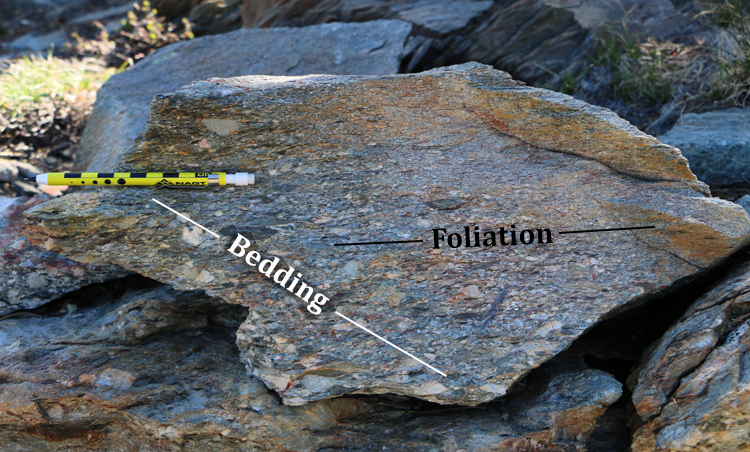
Here is another example, with bedding running from left to right, and foliation running horizontally from upper left to lower right, straight across the contact between a conlomerate and a mudrock:

The great thing about making the hike up to Frog Lakes was to get to see large outcrops showing the stratigraphy plainly, with a delicious tectonic fabric overprinted on it.
Some examples of what I’m talking about:



Here is Laura next to the contact between a meta-mudrock (now slate) and an overlying metaconglomerate:
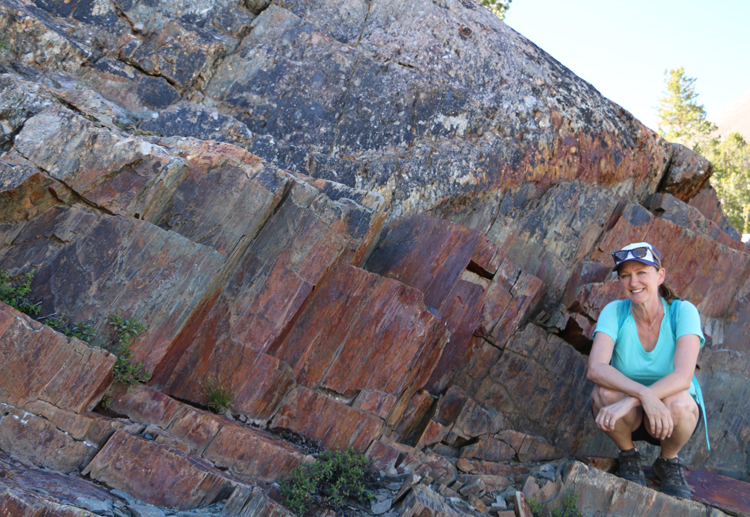
Here’s another spectacular outcrop, showing a gradational upper contact with the lower conglomerate, and a crisp lower contact with the upper conglomerate, suggesting these beds are right-side-up. Additional evidence for this interpretation comes from the structural domain: the bedding in the muddy unit and the cleavage both dip to the left (~west) but the cleavage is steeper, and the bedding dips more shallowly. This is the basic relationship we would expect if the beds were upright.
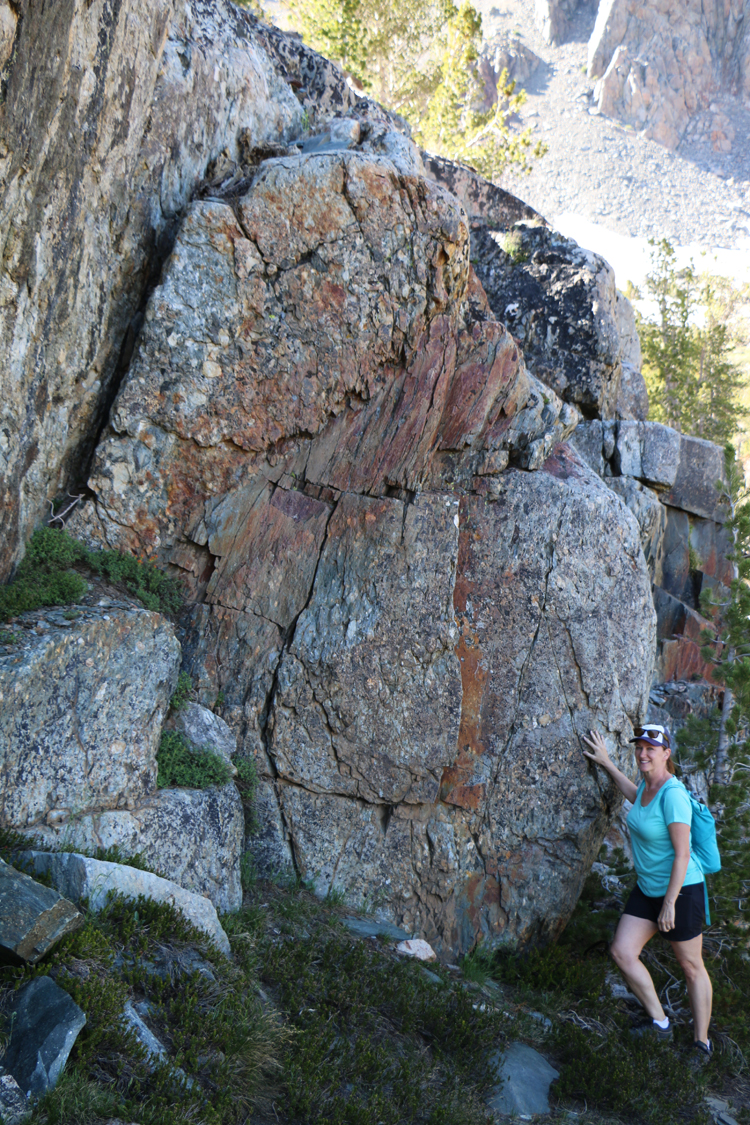
Zooming in on the most informative central portion of this outcrop, where the cleavage shows a prominent deflection as it crosses from conglomerate to mudrock to conglomerate again:

Mostly the rocks here were either (meta-) conglomerates or mudrocks, without any intervening sandstone layers. I did spot one isolated “outsized” clast in the mudrock subunits:

And here is a relatively thin layer of cobbles in a rare sandy deposit adjacent to one of the conglomerates:
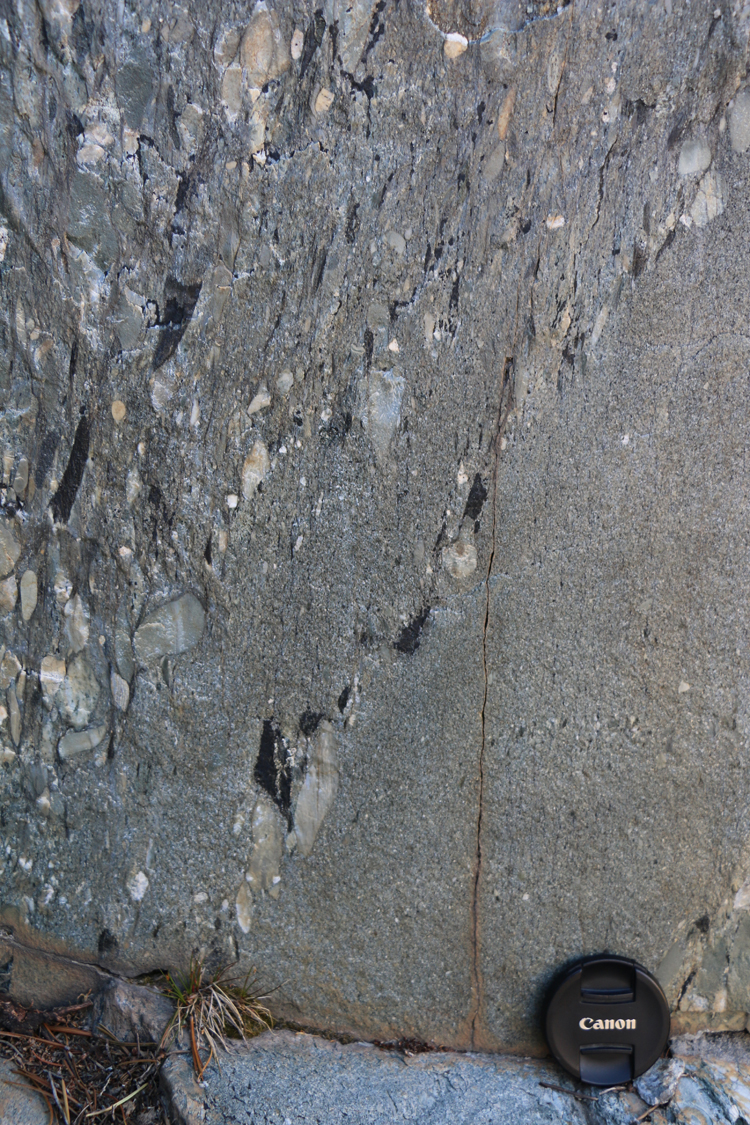
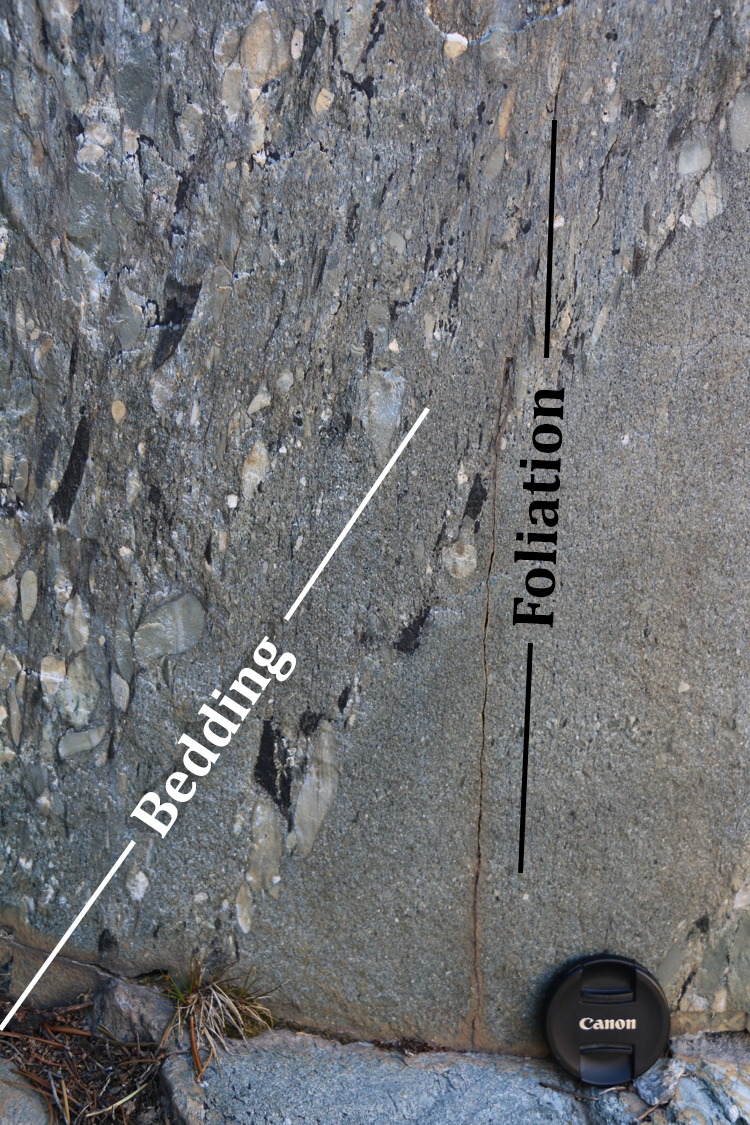
A hodge-podge of other images of these photogenic rocks:


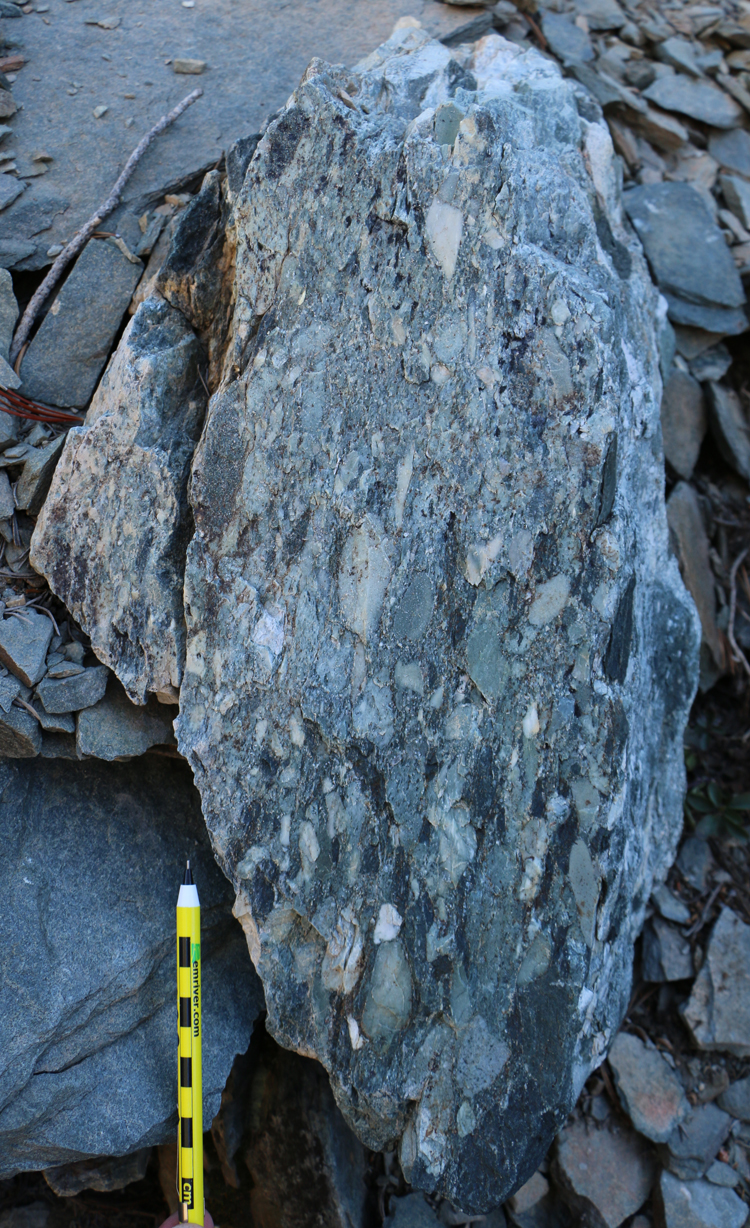

Here’s an apparent flame structure (just above and to the right of the lens cap):

Zooming in on the “flame”:

A few more:

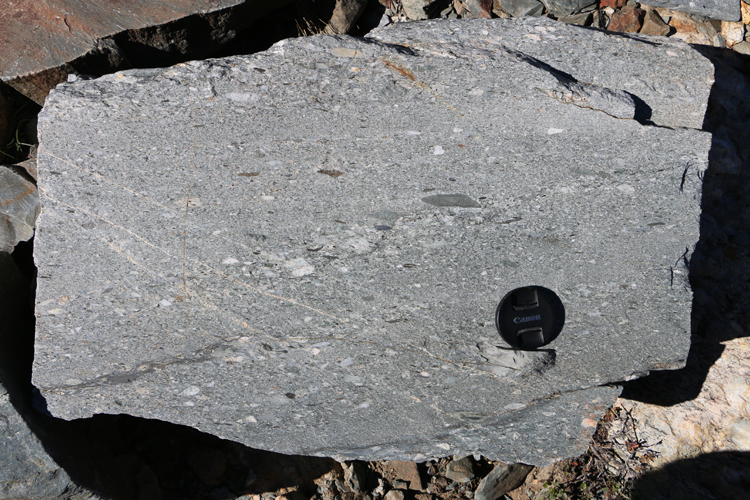

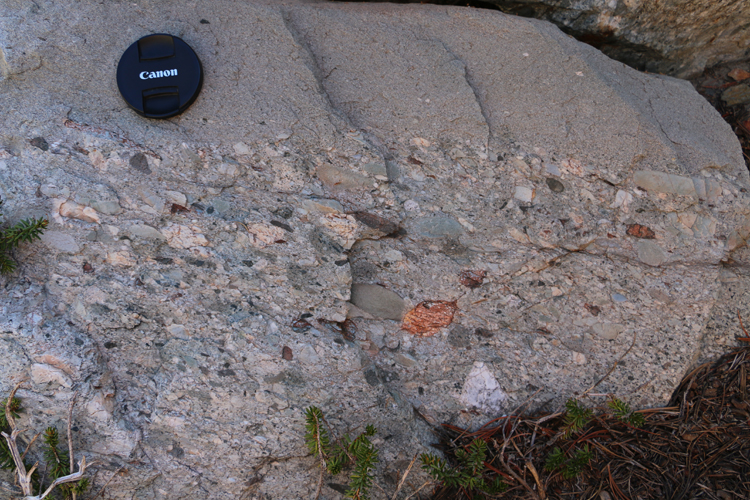
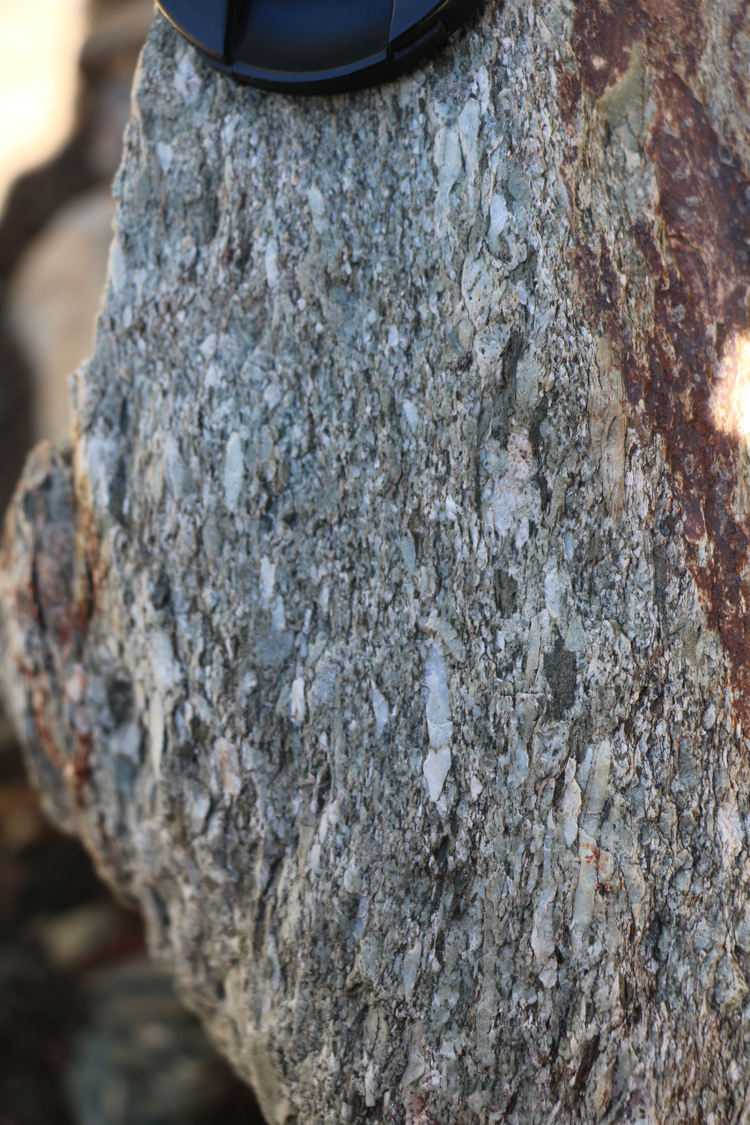
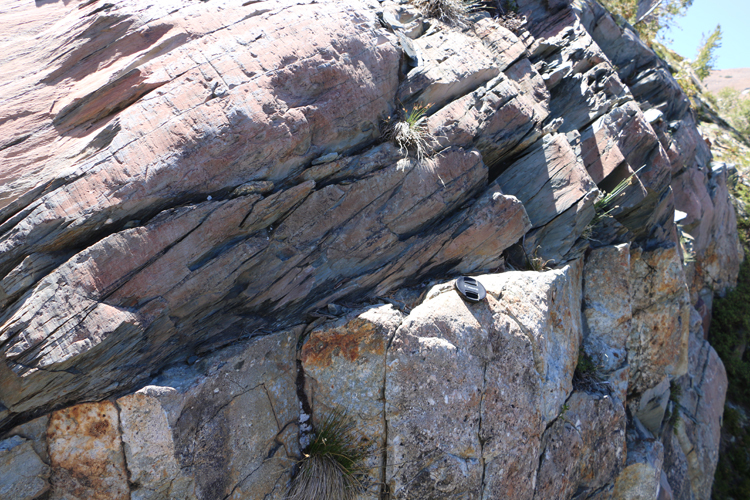
Did you notice the bonus glacial striations in that last shot (on the left)?

We’ll close it out there: you can count those striations as a small geo-lagniappe. I hope you enjoyed visiting Frog Lakes with me! I look forward to revisiting to this exciting location someday soon – hopefully it won’t take me another 15 years to return.


 Callan Bentley is Associate Professor of Geology at Piedmont Virginia Community College in Charlottesville, Virginia. He is a Fellow of the Geological Society of America. For his work on this blog, the National Association of Geoscience Teachers recognized him with the James Shea Award. He has also won the Outstanding Faculty Award from the State Council on Higher Education in Virginia, and the Biggs Award for Excellence in Geoscience Teaching from the Geoscience Education Division of the Geological Society of America. In previous years, Callan served as a contributing editor at EARTH magazine, President of the Geological Society of Washington and President the Geo2YC division of NAGT.
Callan Bentley is Associate Professor of Geology at Piedmont Virginia Community College in Charlottesville, Virginia. He is a Fellow of the Geological Society of America. For his work on this blog, the National Association of Geoscience Teachers recognized him with the James Shea Award. He has also won the Outstanding Faculty Award from the State Council on Higher Education in Virginia, and the Biggs Award for Excellence in Geoscience Teaching from the Geoscience Education Division of the Geological Society of America. In previous years, Callan served as a contributing editor at EARTH magazine, President of the Geological Society of Washington and President the Geo2YC division of NAGT.
Fabulous, as always, this was a real treat. Thanks for sharing!